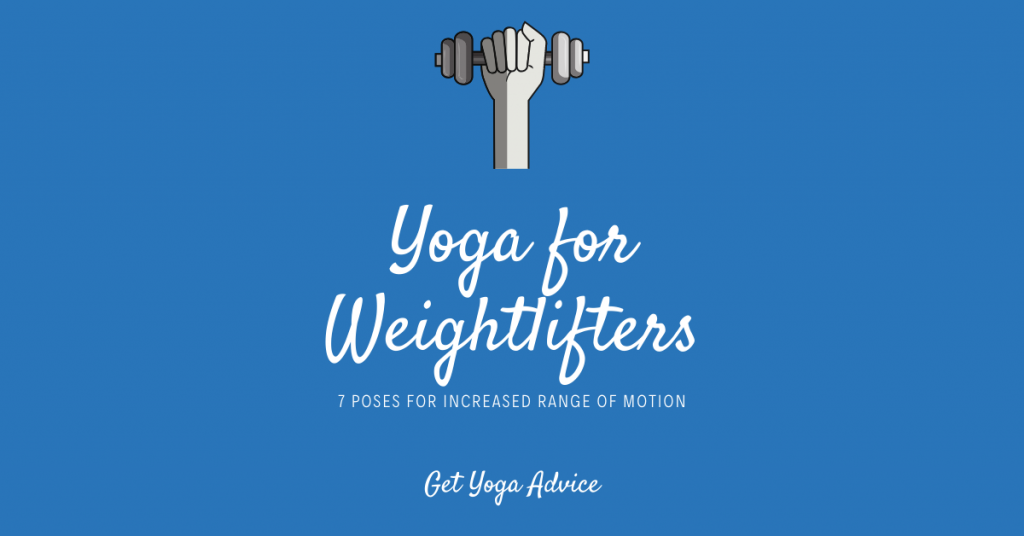Learning yoga for weightlifters will help you perform better at the gym and increase your range of motion.
Then look no further! While most weightlifters know that stretching is essential to warming up your muscles and preventing injury, they don’t always realize how much yoga can benefit them.
By practicing yoga, you’re able to multitask, stretching many different muscle groups at once rather than the simple, targeted stretches that you’re used to doing.
The following seven poses are excellent for improving your range of motion as a weightlifter and can also prevent injury, improve muscle strength, enhance physical performance, and improve fitness. They’re also a nice addition to a program like Starting Strength
Try these poses a minimum of twice a week to bring your warm-up stretches to the next level and reap the results.
Contents
Yoga for Weightlifters – Our 7 Recommended Asanas
1. Revolved Head-to-Knee Pose
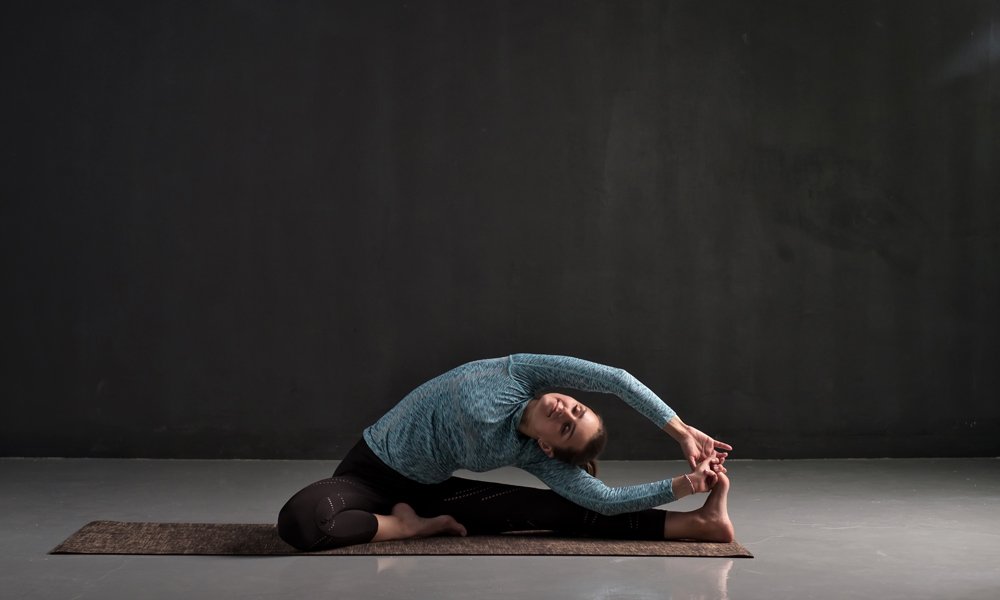
This asana can be used as a warm-up, a cool-down, or both. It benefits weightlifters by increasing overall flexibility, stretching the calves, hamstrings, side body and lower back, as well as relieving tension.
How to:
- Starting in a seated position, bend your right knee and bring your foot in to rest on your inner left thigh.
- Lie your left arm on the ground with your palm up and reach towards the inside edge of the left foot.
- Lift your right arm up and bend at the torso, reaching overhead towards the outside edge of the left foot.
- Look up and to the right, opening up your chest.
- Hold for 20 to 30 seconds.
2. Crescent Lunge Pose
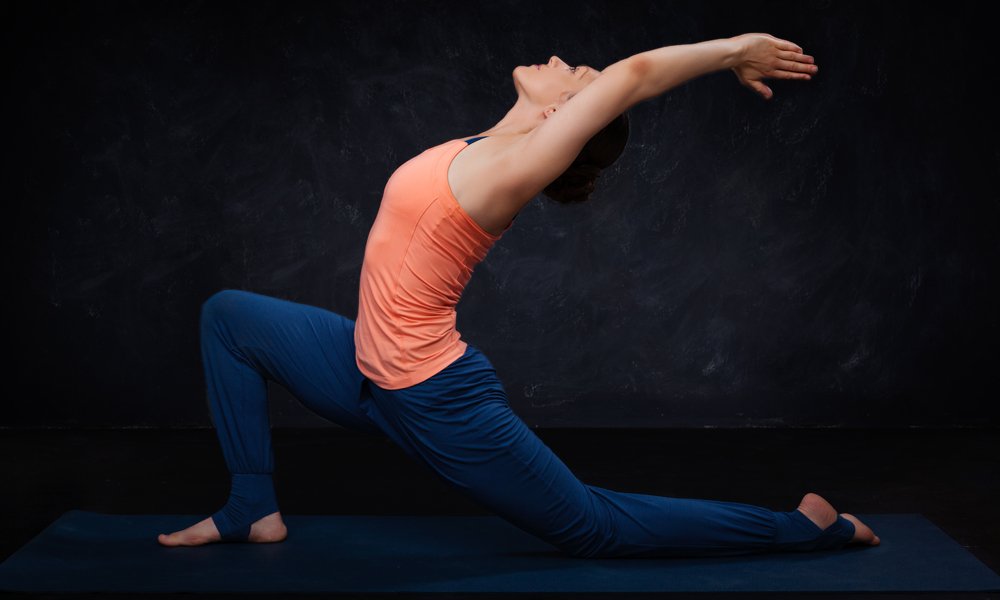
This asana benefits weightlifters by stretching the quads, calves, and psoas as well as strengthening the front leg and alleviating tight hip flexors.
How to:
- Begin by standing at the front of your mat with your feet hip-width apart before stepping your right leg back into a lunge.
- Form a 90-degree angle by stacking your front knee over your ankle.
- Ease forward onto your front leg, sinking into the stretch in your hips.
- Engage your quads and your hamstring of your back-left leg by applying pressure and squeezing.
- Pushing down into your right foot, sweep your arms up above your head, your fingertips reaching towards the ceiling.
- Draw your shoulders down, widening your chest.
- Gaze straight ahead and hold for 20 to 30 seconds.
3. Upward Facing Dog Pose
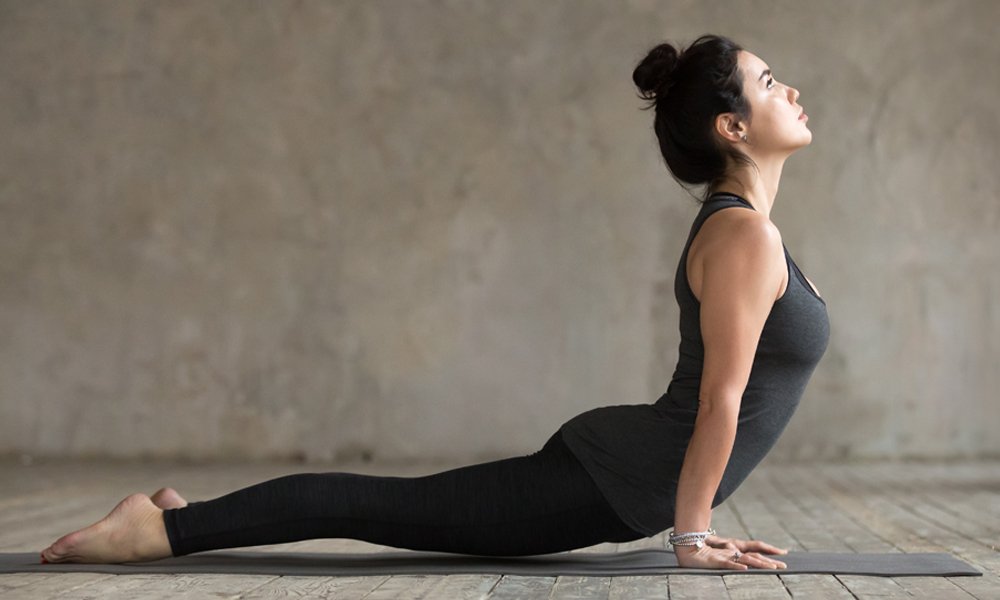
This asana is great for improving ROM (range of motion) for a variety of reasons and is one of the most beneficial poses you can do as an athlete or a weightlifter. Upward Facing Dog focuses on creating a more flexible back and spine as well as stretching and strengthening the wrists, quads, and hip flexors.
How to:
- Lie on your stomach, your legs fully stretched on behind you, with the tops of your feet pressed against the floor.
- Place your palms on the mat beside your ribs on either side of your body and keep your elbows bent.
- On an inhale, press your palms into the floor and straighten your arms, while lifting both your torso and thighs upwards off the mat.
- Allow your hips to fall slightly towards the ground and soften your shoulders, keeping a neutral alignment in your neck.
- Look upwards with your eyes, keeping your head and neck in place.
- Hold this position for 20 to 30 seconds.
4. Downward Facing Dog Pose
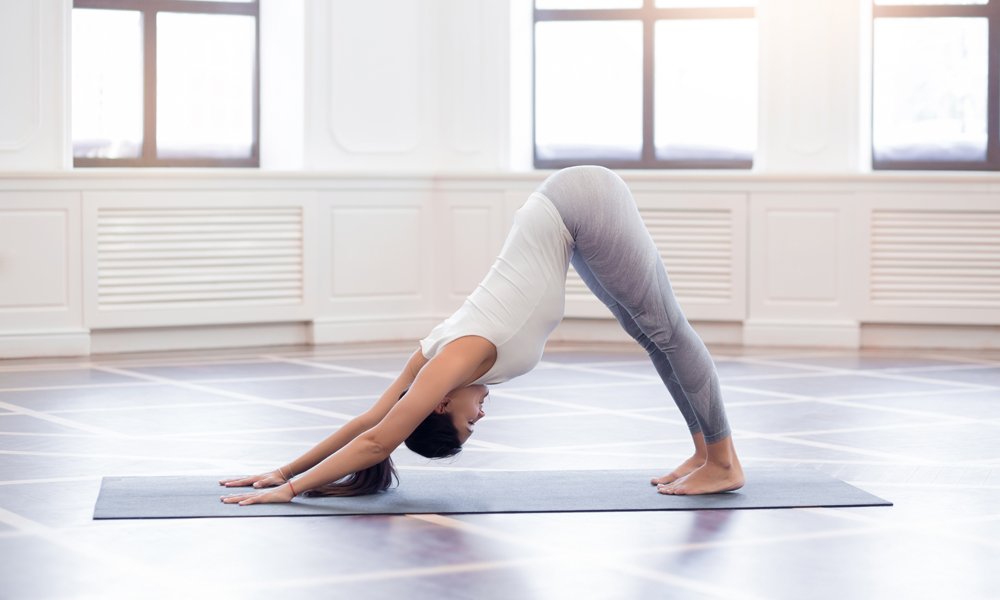
Onto Downward Facing Dog! This pose stretches your calves, hamstrings, and pecs and works on your ability to balance both upper and lower body strength. Not only does this pose help improve ROM but it also prepares you to eventually support your entire body weight on our hands.
How to:
- Begin this pose on your hands and knees, both hip-width apart.
- Spread your fingers wide and inhale, pressing your palms into the mat and tucking your toes under, preparing to stand.
- Exhale and slowly extend your legs, bringing your hips and tailbone towards the ceiling.
- Keep your head and neck in line between your stretched-out arms and your feet remaining hip-width apart.
- Maintain length in your spine and relax your shoulders down from your ears.
- Keep your knees as straight as you can, or bend them slightly until your ROM improves.
- Root yourself firmly between your hands and feet, equally distributing your weight.
- Hold for 20 to 30 seconds.
5. Half Pigeon Pose
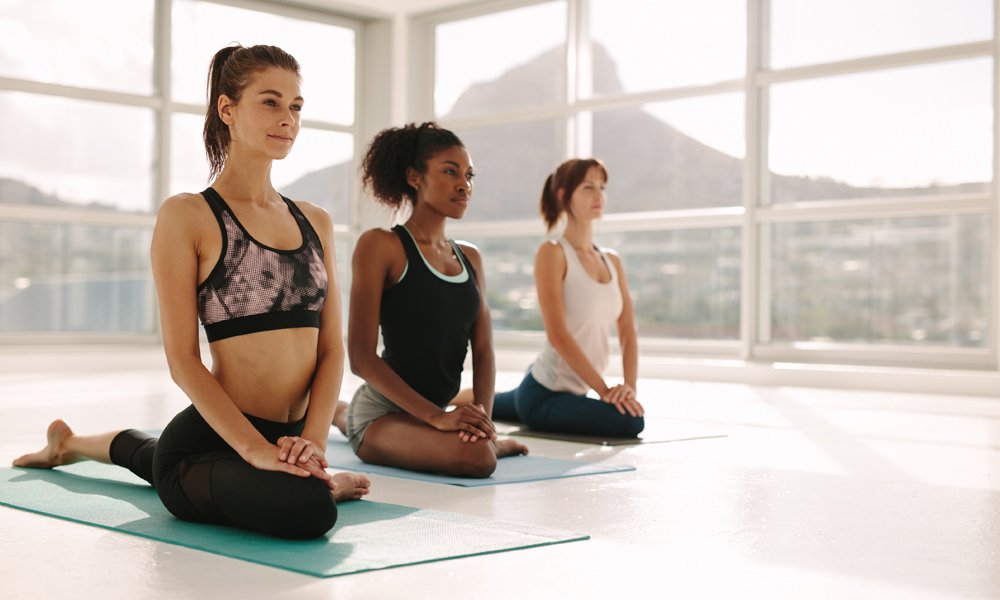
This pose is particularly great for before or after leg day, especially when it comes to workouts that engage the glutes. Half Pigeon Pose helps increase the range of motion in your hips in particular and help you to have a better workout.
How to:
- From Downward Facing Dog, bring your right foot in and towards your right wrist, before setting both your knee and shin on the mat below you.
- Straight your left leg back behind you, with the top of your foot flat on the mat – your legs will look like the number 7.
- If this feels like you’re straining, do not worry about aligning your shin completely parallel from the front edge of your mat – work with your own flexibility.
- Make sure your right knee is aligned with your right hip and flex your right foot.
- Rest your forearms on the mat in front of you, palms facing downwards.
- Lower your forehead and square your hips towards the mat.
- Hold for 20 to 30 seconds before stepping back into Downward Facing Dog to release.
6. Dancer’s Pose
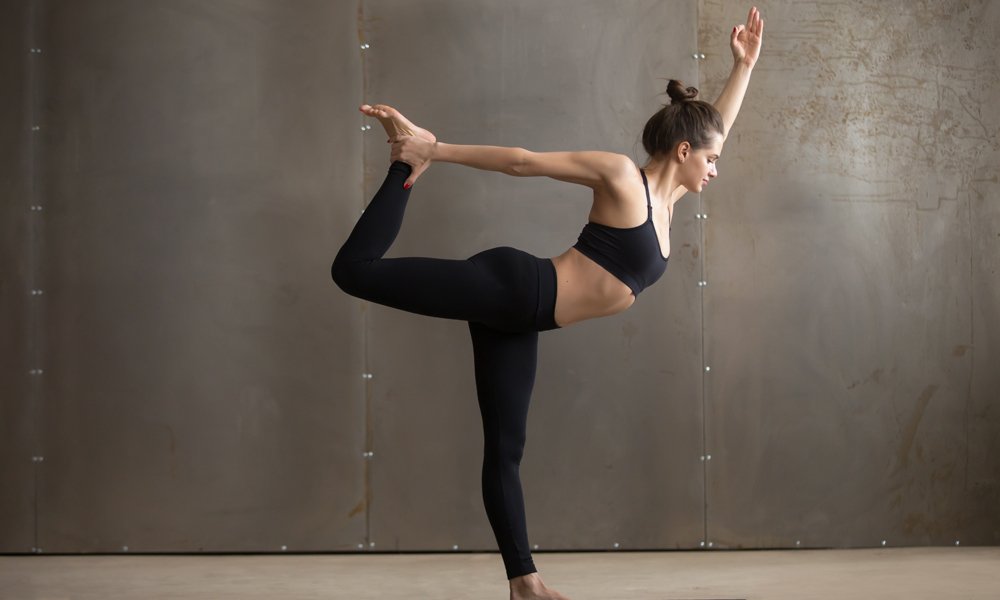
Successfully pulling off the Dancer’s Pose is generally for those who already have a great range of motion – but it doesn’t mean you can’t get there! This is a great pose for weightlifters and focuses on stretching the hips, legs, quads, and hamstrings while opening up and creating space in the chest, shoulders, abdomen, and groin.
How to:
- Starting from a standing position, press your left foot into the mat and bend your right knee.
- Lift your right heel upwards and grab your right foot with your right hand from the inside edge.
- Raise your left arm straight out in front of you and square your hips.
- Lean forward, keeping your left arm extended in front of you – you can either lift your palm upwards towards the sky or keep it downwards, whichever feels better for balance.
- Push your right hand back into your right foot.
- Your left leg should still be straight, while your right toes should be reaching up towards the ceiling, supported by your right hand.
- Hold this pose for 20 to 30 seconds and carefully release.
7. Extended Triangle Pose
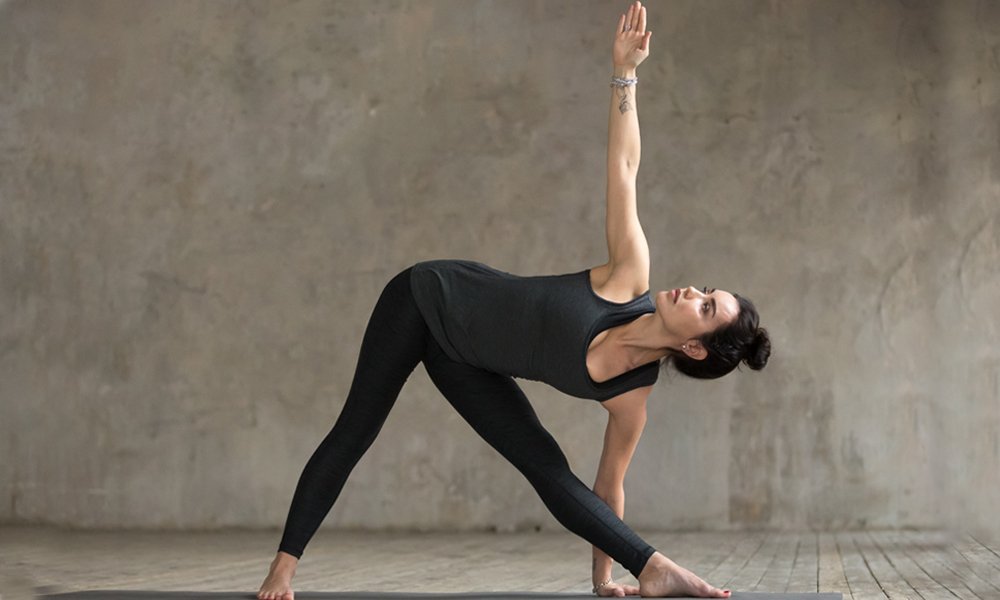
This asana is fantastic for stretching the entire body at once, while also strengthening the thighs, knees, and ankles.
How to:
- Stand at the top of your mat, stepping your feet about four feet apart, reaching your arms out to the side, shoulder blades wide, palms down.
- Bring your left foot in slightly to the right, turning your right foot right at a 90-degree angle – your right heel should be aligned with your left heel.
- Firming down through the thighs, turn your right thigh outward, the right knee cap falling in line with the right ankle.
- On an exhale, extend your torso to the right, bending from the hip joint.
- Firm your back leg and press the left heel into the floor.
- Proceed to rotate your torso to the left, letting the left hip come slightly forward, as you let your tailbone sink towards the left-back heel.
- Rest your right hand on the floor on the backside of your right foot and stretch your left arm towards the ceiling, keeping it in line with the tops of the shoulders.
- Your head should be in a neutral position or turned to the left, eyes gazing towards your left thumb.
- Hold this position for 30 seconds to one minute, carefully release and repeat on the reverse side.
Will These Poses Improve My Range of Motion?
Yes!
Practice these seven poses to improve your range of motion as well as build strength, flexibility, and mobility. Not only will you become a more advanced yogi over time but these poses improve any other physical activity you do.

